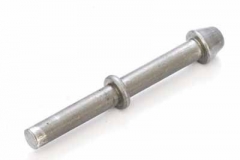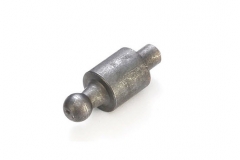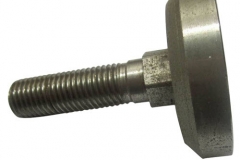Cold Forging
ForceBeyond has been supplying cold forging products to multiple industries for more than a decade. We have helped our customers maximize supply chain efficiency and improved production costs. With our extensive cold forging knowledge and experience, ForceBeyond has also helped our customers consolidate their supplier base. Our customers with cold forging needs are from a scope of industries such as energy, automotive, bus, heavy duty truck, marine, rail etc.
What Is Cold Forging?
Cold forging deforms metal below its recrystallization point – near to or at room temperature. A preferred forging method for softer metals (such as aluminum), cold forging is less expensive and has the ability to produced forged parts that require little or no finishing processes.
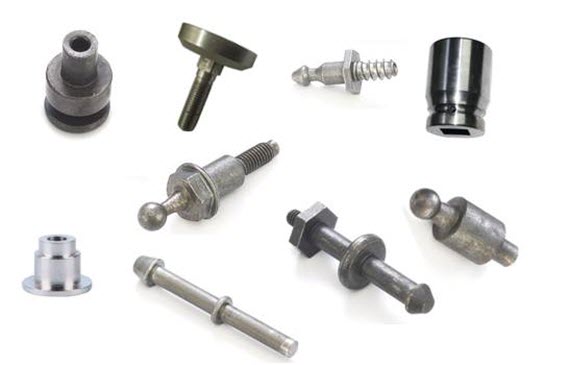
How are Cold Forgings Made?
Basically, cold forging process entails bar stock to be inserted into a die and then squeezed with a second closed die. Similar to the cold heading process (the difference that cold forging makes use of vertical presses instead of horizontal cold heading machines), the work piece is squeezed between two dies until it assumes the desired shape of the die.
Deformation occurs at room temperature, causing a change in the size and shape of the metal. Note here that this forging method is volume specific and generally compliments the cold heading processes by adding more intricate shapes to the blank used in cold heading processes.
Basic equipment types used for the forging method range to include vertical presses, either fully automatic or manually fed. Also note that these vertical presses used can be either hydraulically powered or mechanically powered.
A reliable and cost effective process, some of the parts produced using cold forging includes those for use in the automotive electrical industry and range to include:
- Parts for car seats and alternators (such as the claw-pole)
- Different types of gears used on other parts
- Parts for starter motors such as transmission solenoid body, core and plunger, to name but a few examples)
- Motorcycle parts such as those for flywheel magnetos
- Parts that are hollow with shafts and stems
- Parts used for valves and switches
- Cold forging is also used to produce anti-vibration spiders and parts
Advantages of Cold Forgings
- No heating is required
- Better interchangeability, productivity
- Superior dimensional control
- High rates of production
- Capability to impart directional properties onto the metal being formed
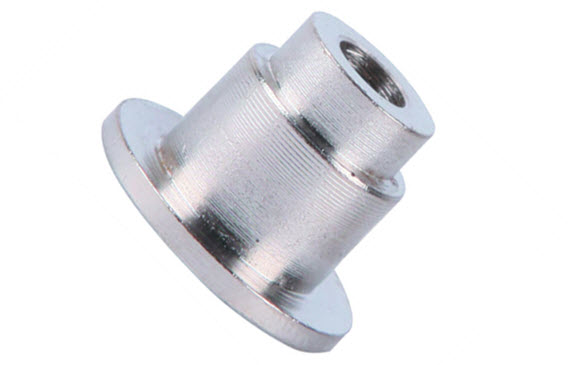
| Material | Characteristics | Application |
|---|---|---|
| Stainless Steel | Corrosion-resistant |
|
| Low Carbon and Low Alloy Steel | Easily processed Good mechanical properties Low material cost |
|
| HSLA/Microalloy Steel | Good mechanical properties Low material cost Simple thermomechanical treatment |
|
| Aluminum | Good strength-to-weight ratio Readily forged |
|
| Aluminum A356.0 | Good strength-to-weight ratio Readily forged |
|
| Nickel-Base Superalloy | Oxidation resistance Creep-rupture strength |
|
| Titanium | High strength Low density Excellent corrosion resistance |
|
Secondary Operations and Heat Treatment of Cold Forgings We Offer
- High precision machining
- Punching, drilling, tapping, bending, milling
- Painting, anodizing, black oxide, powder coating
- Heat treatment
Sources
- American Foundry Society. “Metal Casting”
- Wikipedia. “Investment Casting“, “Sand Casting“
- efunda. “Sand Casting“
- The Investment Casting Institute. “What is Investment Casting?“
- The Library of Manufacturing. “Investment Casting“
- Forging Industry Association “Forging Industry“
Our Internal Resources for Die Casting, Investment casting, Forging and Sand Casting
- Die Casting
- Aluminum Die Casting
- Zinc Die Casting
- A356 Aluminum Casting with T6 Heat Treatment
- Magnesium Die Casting
- Investment Casting
- Stainless Steel Casting
- Duplex Stainless Steel Casting
- Super Duplex Stainless Steel Casting
- Titanium Casting
- Carbon & Low Alloy Casting
- Forging
- Cold Forging
- Hot Forging
- ECO BRASS C69300 Brass Forging
- Sand Casting (Aluminum Sand Casting, Ductile Iron Sand Casting, Gray Iron Sand Casting)
- Specialty Fittings and Fasteners
- Precision CNC Machining and Secondary Operations

